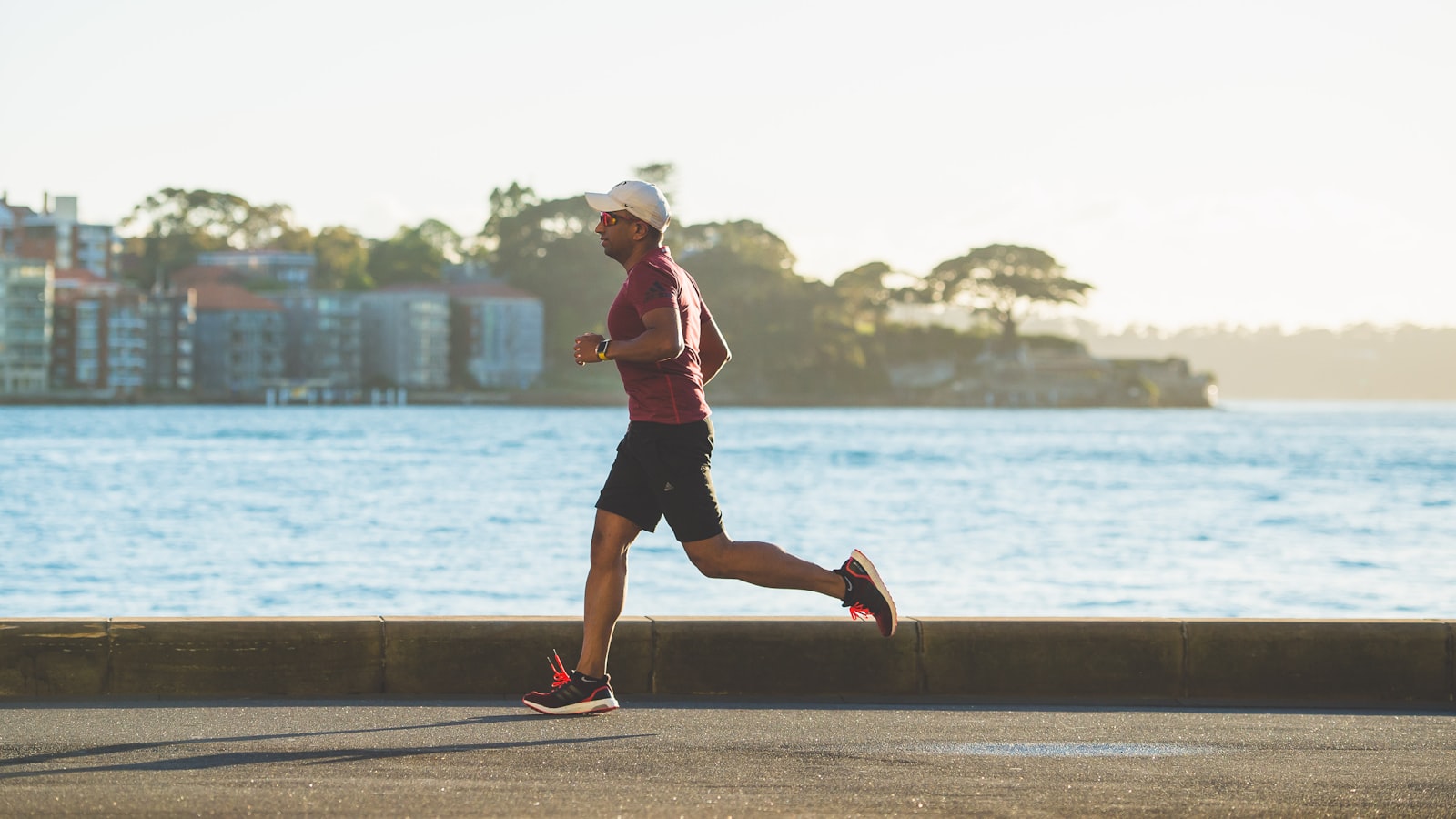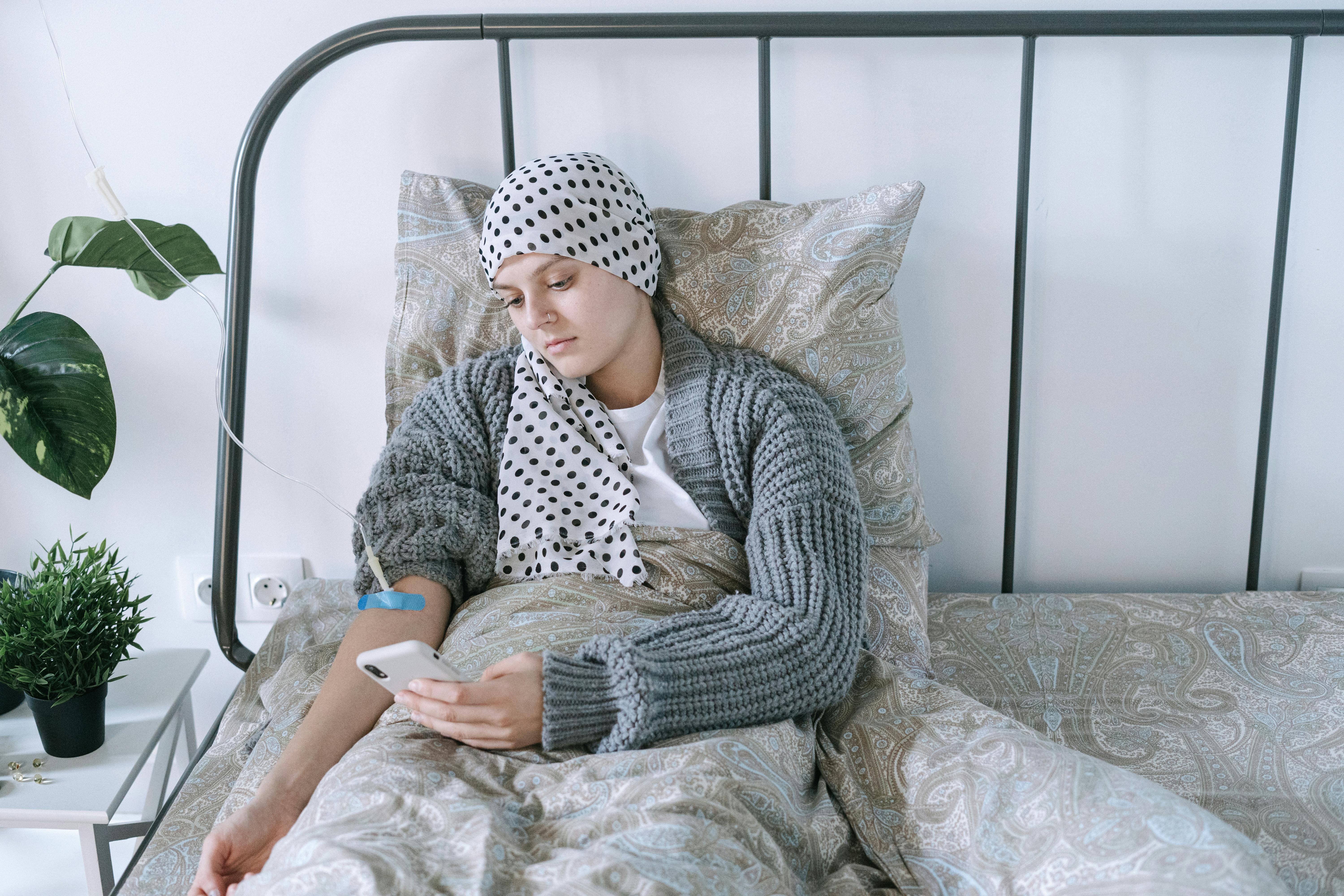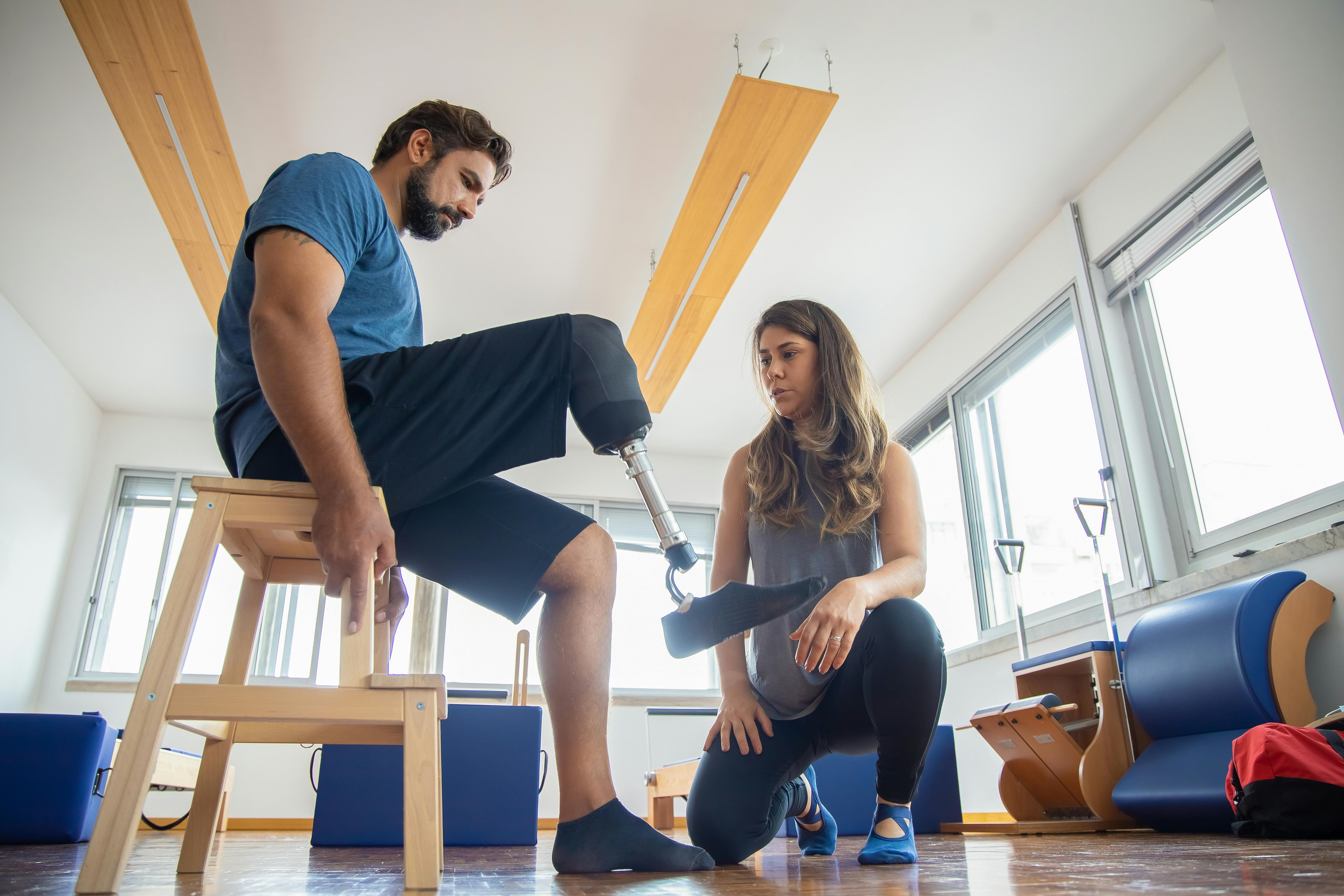What Should I Wear To Physical Therapy

Physical therapy is an important part of any rehabilitation program and it’s essential to dress appropriately for your physical therapy sessions. Knowing what to wear to physical therapy can help ensure you feel comfortable and get the most out of your treatment. In this article, we’ll provide tips and advice on what to wear to physical therapy, so you can make the best decisions for your own individual needs.When attending physical therapy, it is important to wear comfortable clothing that allows for easy movement and flexibility. This may include lightweight shorts or sweatpants, a t-shirt or tank top, and a pair of supportive shoes. It is also recommended to wear loose-fitting items that are not constricting or restrictive in any way. Additionally, it may be helpful to bring a pair of socks and a light sweater in case the room gets cold.
Comfortable Clothing for Physical Therapy
Choosing the right clothing for physical therapy is important to ensure that you can move comfortably and safely during your sessions. Comfortable clothes are essential for physical therapy, as they allow you to move more freely and keep you from getting too hot or cold. The fabric should be breathable, light-weight, and flexible enough to accommodate movement without feeling restrictive. It’s also a good idea to avoid clothing with embellishments like zippers, buttons, or large pockets that could get in the way.
When shopping for physical therapy clothing, look for pieces made of natural fibers like cotton, linen, or wool. These fabrics will help keep sweat away from your skin and also provide breathability when exercising. Avoid synthetic fabrics like polyester or nylon which can trap heat and cause discomfort during physical activity. Additionally, choose clothing with a relaxed fit that won’t constrict your movements or irritate sensitive areas of the body.
When it comes to footwear for physical therapy sessions, it’s important to wear shoes that provide adequate support and cushioning. Look for shoes with a sturdy sole that won’t slip off during exercise and make sure they fit properly so there’s no rubbing or pinching around the toes or heel area. Low-cut running shoes are ideal for more active exercises while cross-trainers are best suited for stretching exercises or activities that involve more side-to-side movements.
Finally, don’t forget to bring along some accessories like wrist wraps or knee braces which can provide extra support during physical therapy sessions. It’s also a good idea to bring along a towel if you plan on sweating during your session so you can keep yourself dry and comfortable throughout the exercises. With the right clothing and accessories in place, you’ll be able to focus on your physical therapy goals with ease!
Appropriate Footwear for Physical Therapy
Wearing the right shoes is essential when engaging in physical therapy. The right type of footwear can provide stability, support, and comfort for your feet while performing physical therapy exercises. Shoes should be comfortable and provide good arch support. It is important to choose shoes that fit properly and are designed for the specific type of activity you will be doing.
For example, if you are engaging in aerobic activities such as walking or running, it is important to choose shoes with a cushioned sole that will absorb shock, provide good grip and flexibility. Cross trainers are a great option for these types of activities. If you will be participating in more strength-based exercises such as lifting weights or using resistance bands, then look for shoes with a flat sole and a wide base for added stability.
It is also important to consider the environment in which you will be exercising. If you will be outdoors on trails or rough terrain, then look for shoes with an aggressive tread pattern that provides extra grip on slippery surfaces. Additionally, it may be beneficial to invest in water-resistant materials if there is a chance of rain or snow during your workout.
Finally, always wear socks with your shoes when engaging in physical therapy to reduce friction and prevent blisters from forming on your feet. Wear socks made from breathable fabrics like cotton or wool to keep your feet dry and comfortable while exercising.
When choosing the right footwear for physical therapy activities, it is important to consider factors like comfort level, arch support, cushioning, grip/traction, and protection from weather conditions. Taking the time to invest in quality footwear can help ensure that your physical therapy sessions are safe and effective so you can get the most out of every workout!
Clothing Materials for Physical Therapy
Physical therapy involves the use of clothing materials to support and protect the body during treatment. It is important to select quality clothing that is both comfortable and effective in providing support. The type of material used should be chosen based on the patient’s needs, as well as the specific treatment being performed. Different materials offer different levels of protection and support, so it is important to take time to consider what type of clothing is best for the patient.
Cotton is one of the most commonly used fabrics for physical therapy clothing. It offers comfort, breathability, and flexibility. Cotton is also relatively easy to clean and maintain, making it a popular choice for physical therapy sessions. Another popular material is spandex, which offers great stretchability while still being lightweight and breathable. Spandex can provide a snug fit that helps keep the body in proper alignment during treatment.
Synthetic fabrics such as nylon or polyester are also popular options for physical therapy clothing. These materials are lightweight and have excellent stretchability, allowing them to move with the body during exercises or treatments. Synthetic fabrics are also more durable than natural fabrics like cotton or wool, making them ideal for long-term use in physical therapy sessions.
For individuals with sensitive skin or allergies, there are hypoallergenic materials available such as bamboo or hemp cloths that can provide more comfort during treatments. There are also specialty items available such as compression garments that provide additional support and protection during certain types of treatments or exercises. Whatever type of fabric you choose, make sure it meets your needs and provides comfort while still providing protection from injury during physical therapy sessions.
In addition to choosing quality clothing materials, it is important to make sure that they fit properly as well. Loose-fitting clothes can restrict movement or put too much stress on certain areas of the body while tight-fitting clothes can limit range of motion or cause discomfort during treatments. Taking time to find clothes that fit correctly will ensure maximum benefit from physical therapy sessions while avoiding injury due to improper fitting garments.
Ultimately, selecting quality clothing materials for physical therapy depends on individual needs and preferences as well as on the specific type of treatment being done. Consider all factors before making a decision about what material will be most effective in providing support and comfort while still allowing full range of motion during treatment sessions. Taking time to choose the right fabric will help ensure successful outcomes from physical therapy sessions!
Sweat-Wicking Clothes for Physical Therapy
Physical therapy is an important part of recovery for many people, and having the right type of clothing is essential. Sweat-wicking clothes are the perfect choice for physical therapy sessions. They provide breathability and comfort, while also keeping the body cool and dry during exercise. Sweat-wicking fabrics are designed to draw moisture away from the skin, which helps to regulate body temperature and keep the patient comfortable during their therapy session. These types of clothes also have antibacterial properties, which can help reduce odor and bacteria buildup on the skin.
When choosing sweat-wicking clothing for physical therapy sessions, it is important to consider how much coverage the fabric provides. Loose-fitting clothes are usually best for physical therapy sessions since they allow more freedom of movement and provide adequate coverage without being too restrictive. It is also important to choose a fabric that is lightweight and breathable so that it doesn’t restrict movement or cause discomfort during exercise.
Sweat-wicking clothes come in a variety of colors and styles, so patients can choose something that fits their individual tastes and needs. They are also usually low maintenance since they don’t need to be washed as often as other types of clothes. This makes them ideal for those who don’t have time to wash their clothes frequently or those who want something that will last longer than regular fabrics.
Overall, sweat-wicking clothes are an excellent choice for physical therapy sessions because they provide breathability, comfort, and protection from bacteria buildup on the skin. They also come in a variety of styles so patients can find something that fits their needs and preferences.

What Are the Best Colors to Wear to Physical Therapy?
When attending physical therapy, it is important to dress in comfortable and breathable clothing. However, wearing the right colors can also be beneficial. The color of your clothing can have an impact on your mood and energy levels, so it is important to choose colors that will promote a positive attitude and help you feel energized during your session.
The best colors to wear to physical therapy are bright, vibrant shades such as yellow, orange, red, pink, and purple. These colors stimulate the senses and can help increase motivation and focus. Wearing lighter colors such as white or light blue may also be beneficial as they are calming and can help you relax during your session.
It is also important to avoid wearing dark or dull colors such as black or gray as these do not promote a positive attitude and could cause you to feel sluggish during your session. Additionally, it is best to avoid wearing clothes with busy patterns or bold prints as this could be distracting for both you and your physical therapist.
Overall, when attending physical therapy sessions it is important to wear comfortable clothing that is breathable and allows for movement. However, it is also important to choose clothing in bright and vibrant colors that will help motivate you during your session. Avoiding dark or dull colors, as well as busy patterns or bold prints will ensure that you remain focused on the task at hand while also feeling energized throughout your appointment.
Physical Therapy Dressing Guidelines
Physical therapy dressing guidelines can help ensure that you are able to maintain a comfortable and safe environment while participating in physical therapy sessions. It is important to dress appropriately for physical therapy, as the wrong clothing can cause discomfort and impede your ability to fully participate in the session. Here are some tips for choosing the right type of clothing for physical therapy:
Wear loose, comfortable clothing that will allow you to move freely. Avoid wearing clothes that constrict your movement or are too tight. Clothing should be lightweight and breathable to help you stay cool during the session.
Choose clothing with minimal seams or buttons since these can irritate the skin or cause discomfort when performing certain exercises. Wear clothes that will stay in place during movement, such as leggings or shorts with an elastic waistband.
Make sure to wear supportive shoes that will cushion your feet and provide traction on slippery surfaces. If you are going to be using exercise equipment, such as a treadmill or stationary bike, it is best to wear shoes designed specifically for exercise.
For hygiene purposes, make sure to wear clean clothes each time you come in for a session. It is also important to keep your nails trimmed so that they do not snag on clothing or injure yourself during certain exercises.
By following these guidelines, you can ensure that you are dressed appropriately and safely for physical therapy sessions. This will allow you to get the most out of your physical therapy sessions and achieve optimal results.
The Benefits of Wearing the Right Clothing to Physical Therapy
Going to physical therapy is a necessary part of many recovery plans. It can help with pain relief, increased range of motion, and improved strength. One important thing to keep in mind when heading to your physical therapy appointment is what clothing you should wear. Wearing the right clothing can make a big difference in the effectiveness of your treatments and your comfort during your visit.
The first thing you need to consider when choosing what clothing to wear for physical therapy is how easy it will be for your therapist to access the area that needs work. You want to choose something that you can easily move around in and that provides access to the affected area without removing all of your clothing. This could mean wearing shorts if you are having treatment on your knee or leg, or wearing a tank top if you’re having shoulder or back treatments.
You also want to avoid any clothing that might get in the way of your therapists’ movements such as long dresses or bulky sweaters. Loose-fitting clothes are ideal as they will allow you more freedom of movement while still providing coverage and modesty.
Finally, it is important to remember that physical therapy involves some activities that may make you sweat, so choose clothing made from breathable fabrics such as cotton or polyester blends that will allow air circulation and wick away moisture from your skin. You also want something that won’t be ruined by sweat, so make sure it can be washed easily after each use if necessary.
Choosing the right clothing for physical therapy sessions is an important part of getting the most out of these treatments and ensuring a comfortable experience for both patient and therapist alike. Keep these tips in mind when selecting clothes for your next appointment!

Conclusion
When deciding what to wear to physical therapy, comfort should be your number one priority. Breathable fabrics like cotton and spandex are ideal for allowing your body to move freely and keeping you cool during your session. Additionally, you should wear clothes that are easy to move in and won’t get in the way of completing exercises. Shoes should provide support and stability, as well as a non-slip surface. Take into account the type of treatment you are receiving when selecting clothing to ensure it is appropriate. With these guidelines in mind, you can confidently choose an outfit that will keep you comfortable and safe during physical therapy.
Remember, when it comes to physical therapy, the most important factor is achieving your goals for recovery. Having the right clothing can help you focus on the task at hand without worrying about anything else. Let your therapist know if anything feels uncomfortable so they can adjust their approach accordingly. Selecting appropriate attire that keeps you comfortable will help ensure a successful experience with physical therapy!
